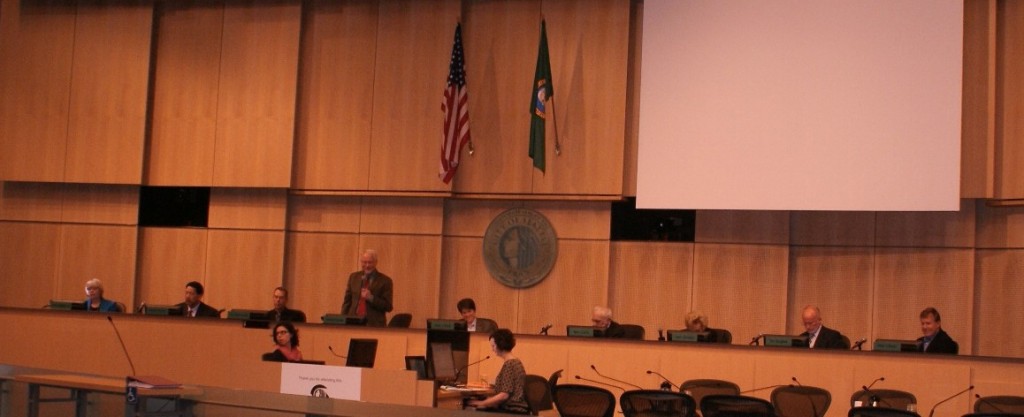The Seattle City Council has unanimously passed it’s updated Street Tree Ordinance. There were no amendments – if changes are desired in legislation it’s necessary to get them done in Committee before they come to the full Council for a vote. Thank you to everyone who took time to write or contact the Seattle City Council on this issue.
You can view the adopted Ordinance # 117745 by clicking on this link.
The gist of the bill is that permits will be required to remove or do major trimming to street trees and tree replacement is required for trees removed “if site conditions permit”.
Applying for a permit to remove a street tree does not mean it will be removed.
A tree can only be removed if it is a hazardous tree, poses a public safety hazard, is in a condition of poor health or poor vigor or cannot be successfully retained due to public or private construction or development conflicts.
Notice of an application to remove a tree must be publicly posted at the site for 14 days and public comment will be accepted before the Director makes a decision.
Any person violating the act shall be subject to a fine of up to $500 per day.
In addition any person who destroys, injures or mutilates a street tree may be subject to a fine equal to the appraised value of the tree and if the violation is willful or malicious, the penalty may be trebled.
All tree service providers engaged in pruning, removing or otherwise treating street trees shall register annually with the Department of Transportation.
Any major pruning, removal or treatment of street trees by a Tree Service provider shall be certified by an ISA certified arborist or ISA certified worker.
You can read the full ordinance to get more details. If you have concerns about specific language or its interpretation you should let Nolan Rundquist at the SDOT know as they will be preparing CAMS or Client Assistance Memos to explain details to the public to clarify issues which may be confusing.
Nolan Rundquist, the City Arborist at SDOT has been working many years to get this ordinance drafted and passed and should be thanked for sticking with it. Also the Seattle Urban Forest Commission helped in reviewing the proposal as well as members of the public. And Seattle City Councilmember Richard Conlin deserves special recognition for leading the Council effort to enact this update.
Next up in the next few months will be the 5 year update of the Urban Forest Management Plan which is being renamed the Urban Forest Stewardship Plan.
The third component of the urban forest updates is the private property tree ordinance proposal. DPD (Seattle Department of Planning and Development) has said they will release a new draft sometime in June and we can expect the issue will be before the Seattle City Council for a vote early next year.
So far this has been the hardest component of the urban forest updates to reach agreement on because of DPD’s bias toward development as its mission rather than the protection of trees. This is why efforts need to be continued to move oversight of trees to the Office of Sustainability and Environment (OSE). DPD’s prime mission is to help developers build projects, not protect trees. To get maximum protection, tree oversight needs to be in a department where they have an advocate to speak for them and OSE’s mission is most consistent with that.
Keep updated on Seattle tree and urban forestry issues by following Friends of Seattle’s Urban Forest





